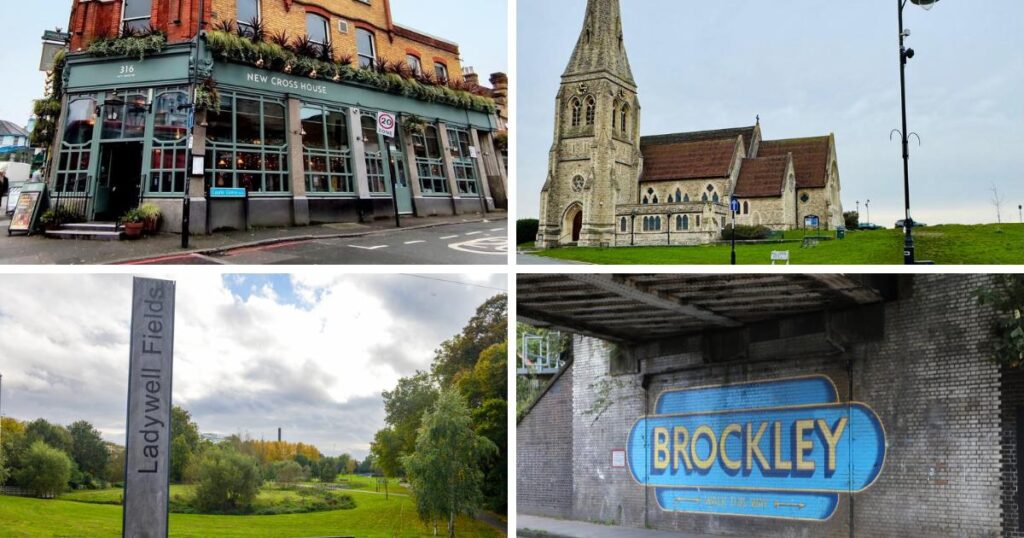Lewisham is full of interesting local history, with many of its neighbourhoods holding interesting stories that link with the names.
From sacred wells to royal picnicking spots, we’ve delved into the meanings behind five neighbourhoods in Lewisham and where they may have got their names from.
New Cross
Before it was New Cross, the area was formerly named “Hatcham” up until the 17th century.
In 1675, writer John Evelyn noted meeting a friend at “New Crosse,” and from there the name has stuck ever since.
The name itself is thought to come from a coaching inn called The New Cross House, originally called the Golden Cross, that served travellers passing through, and the current New Cross House pub is close to the site of the old inn.

Blackheath
An urban myth about Blackheath is that it earned its name from the Black Death and that the Heath may be home to a huge plague pit.
But in reality, Blackheath got its name during the 11th century and it comes from Old English — either describing “dark soil” or a “bleak heath”.

Ladywell
Ladywell earned its name from Lady Well – a spring thought to be dedicated to the Virgin Mary that once flowed beside Ladywell Road.
This spring was used up until the 1850s, when the area began to be more heavily occupied with cottages.

Brockley
It’s thought that neighbouring Brockley’s name may come from “Broca’s clearing” or simply “the clearing by the brook”.
It began as a small settlement straddling Lewisham and Deptford, its heart now known as Crofton Park.

Honor Oak
Legend has it that Queen Elizabeth I once picnicked under an oak tree in Honor Oak in 1602.
This famed tree later became known as the Oak of Honor, and the name stuck.
Queen Elizabeth I was particularly fond of neighbouring Greenwich and spent much of her time at the Tudor Palace that once stood on the site of the Old Royal Naval College – so its possible that she may have travelled into Lewisham at some point.




